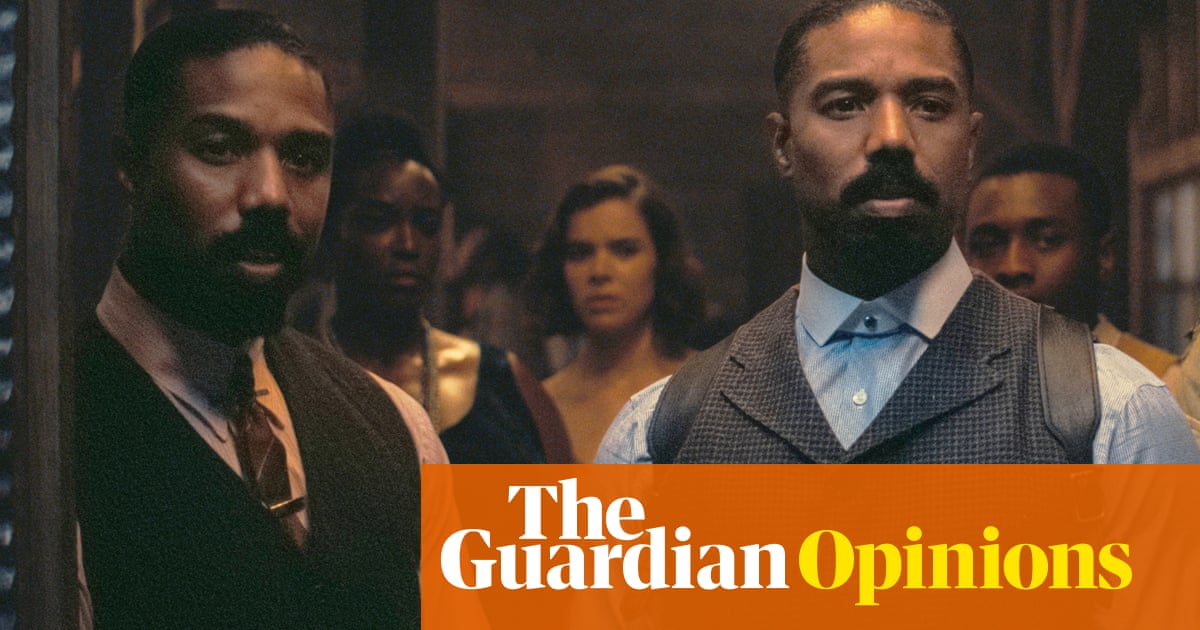When it comes to centering the Black experience on film, director Ryan Coogler has carved a fruitful and unprecedented niche.Fruitvale Stationreconstructs the final hours in the life of Oscar Grant, a 22-year-old Oakland man killed by a transit cop on New Year’s Day. The Creed franchise tarries in the space between Black athletic genius and fatherlessness. The Black Panther franchise meditates on the relationship between Black Africans and the global diaspora. Now comesSinners, a Jim Crow period piece that frames the Black experience in America as a horror show – complete with real scars.
The film, which made its theatrical debut over the weekend, follows Sammie – a young guitar hero (played by newcomer Miles Caton) itching to break away from his preacher father and the family church to play the blues for the unsaved masses. He gets his big break when his twin cousins (both played byMichael B Jordan) open a juke joint in their Clarksville, Mississippi, hometown with the ill-gotten gains they acquired during their stint working for Al Capone’s organized crime syndicate in Chicago. The pop-up grand opening, a major attraction for Clarksville’s hardworking community of sharecroppers, offers them a hard-earned nighttime catharsis until a trio of bloodthirsty vampires appears. That they also happen to be white is no accident.
The Black and white framing might sound heavy-handed in passing, but that’s only because films have traditionally presented it in reverse. Coogler, though, doesn’t just flip the script. He suffuses it with deep cultural and historical context. He shows how Black Americans manage to find happiness in spite of the false choices they’re presented to carry out their lives – in this case through the story of the great migration. “It’s a personal obsession of mine,” he toldthe Guardian, “this period of time when Black people were considering leaving the south en masse.”
The largest internal migration in US history at the time, the great migration was the movement that saw millions of Black Americans emigrate from the rural south to the Rust belt and Sun belt as segregation took hold in the early 20th century. From 1910 to 1940, nearly 2 million people left the American south, home to 90% of the Black population, in the first wave of the great migration; it reshaped cities such as Los Angeles, Philadelphia and New York – where the great migration gave rise to theHarlem Renaissance. For Black Mississippians, Chicago becamethedestination, and the Illinois Central Railroad offered a direct route. The Black southerners who couldn’t afford a ticket to ride walked along the 800-mile railroad in a quest for genuine freedom.
But Black southerners soon found that racism was very much alive and well in those other parts of the country too, and Sinners nods at this disappointment. Early in the film, Sammie pictures Chicago as a paradise of Black tolerance and self-determination, and the twins waste no time setting the record straight on the US’s most segregated city. “Chicago ain’t shit but tall buildings instead of plantations,” one of the twins tells him. Later on, the film brings up a town outside of Clarksville, the birthplace of the blues, that Black people have made into their own utopia – but the idea is greeted with a degree of skepticism that foreshadows real-world tragedies such as Tulsa’s Black Wall Street and other thriving Black enclaves that were razed either because of white supremacy or eminent domain. In the end, those escapes were false choices, too.
In Sinners, death and bloodshed are par for the genre. Really, it is all the false choices the characters are forced into that make the film scarily familiar – even if Coogler swears he wasn’t trying to make a modern allegory. (“Any direct ties with what’s happening right now are, like, totally coincidental, or ironic,” said Coogler, who wrote the story two years before the current administration took office.) For Sammie, it was either misery on the plantation or survivor’s guilt. For Smoke, the level-headed twin in Jordan’s gemini performance, it was either reckoning with white supremacy alone but alive, or true freedom, happiness and a complete Black family in the afterlife. For Delta Slim (Delroy Lindo), the famous local bluesman, it was either the living nightmares of Jim Crow or a halfway comfortable escape at the bottom of a bottle. Even the battle between the Black townspeople and the white undead is presented as a choice between spiritual unity or subjugation in the flesh.
That it all comes to a head at the juke joint grand opening is no coincidence. The party winds up telling a larger story about Black people’s knack for carving out joy in the midst of tragedy. Sinners hammers home the point in a supernatural party scene that connects Black revelers from generations past and future. As I watched it, I couldn’t help thinking about how Black Americans have made a point of wallowing in joy and self-preservation in the midst of today’s doomed political climate. While white Americans angrily take to the streets, Black Americans gather at weddings and baby showers and cookouts to indulge the newest party craze – the “Pop That Fan” line dance. “Fans have replaced the signs, and joy has replaced the rage,” former New York Times columnist Charles M Blow wrote in arecent Instagram post. “Politics are important and have their place, but Black people at the moment are dwelling in the healing power of community.”
The horror of all these false choices really leaves you cold when Sammie reflects on the juke joint party later on in Sinners. He calls it the best night of his lifeandthe worst night of his life. That is the Black experience in America in a nutshell, and it figures that Coogler’s allegory would get the visceral details of this undying real-life horror so right.
